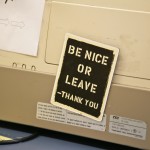
The final new book cover
RECONCILABLE DIFFERENCES: BEARING SCARS
Finally Reconcilable Differences is ready for publication. As I’ve mentioned elsewhere, this is a book that was originally written over ten years ago. For all the revisions, it will always carry the scars of having been my first, and because of that, the vehicle for my learning curve as a writer.
In some ways, this seems appropriate for a book that’s about exactly that. A woman, Kate O’Day, who carries the emotional and psychic scars of a long-ago sexual assault, and the emotional trauma of dealing with and healing from that over many years. Kate, like her story, has been in a long iterative process of revision, learning and rebirth.
I’m so happy to be able to share Kate’s story with you at last. It’s an important story, and as one reviewer said, “we get to ride along on this harrowing journey without getting too beat up along the way.” Reconcilable Differences explores how sexual assault can lead to repressed memories, PTSD, and compromised self-esteem that has deep and lasting impact on a woman and her ability to form lasting and intimate relationships.
I felt it was important to explore these subtler psychological dimensions, since they are rarely discussed, in the context of growing awareness of rape culture, and how it supports, prolongs and institutionalizes the oppression of women for the duration of their lives.
A HOPEFUL STORY OF HEALING & SELF LOVE
But this is not meant to be a dark or a radical book. My goal had always been to tell a love story. A sensitive and intimate exploration of one woman’s journey toward self-knowledge, self-acceptance and love. Although Reconcilable Differences isn’t a classic romance, it is a love story, as Kate navigates the reawakening of a love she lost long ago, along with her own sense of self.
It’s ultimately an optimistic story that hopefully resonates with readers, allowing insight into the inner life of a woman searching for identity, fulfillment, balance and love. In that regard, it speaks to us all.
HAVING IT ALL
Regardless of your personal experience, everywoman’s life shares certain common threads. Despite changes over generations, and from place to place, women have always had to struggle to find their place in society. No matter what choices you are given, or what decisions you make, there are always options, always consequences, always disappointments. I don’t think this feeling is particular to my generation, but I do feel that my own life is a reflection of this truth, and so I write with insight and authority on subjects that have touched me personally.
The Having It All series of novels is my way of exploring modern women’s lives as they try to integrate the particular circumstances of their families of origin and personal experiences with perpetually conflicting goals. How do we balance freedom with security, self-expression, identity and autonomy with love, family and belonging? As we variously lean in and try to participate fully in the world, we also need to keep a finger on the pulse of our inner lives to ensure that we don’t sell ourselves short. True empowerment means living fully in our own essence, and having the freedom to make and live with our choices without regret.
WHY YOU SHOULD READ THIS BOOK?
This is a good moment to reflect on why I wrote this story, and why I believe you should read it. Women’s Fiction encompasses the woman’s journey no matter where or when or how she lives, and by donning the mantle, and walking in the shoes, of characters that are like, but different from ourselves, we learn. We become sensitized to the particular challenges women face, and we can apply those lessons to our own lives, hopefully for the better. We learn about the world, we learn about ourselves, and we learn about each other.
We are all on a journey, and honest compelling storytelling has always been an important way for us to broaden, deepen and strengthen ourselves for the road. I hope you join me on this journey and both read and enjoy Reconcilable Differences. There are more stories where this one came from!
FOLLOW ME, SUBSCRIBE, SIGN UP, SHARE, BUY THE BOOK & WRITE A REVIEW
These are all the ways you can help me with the business side of being an author. The more help I get with this stuff, the more time I can spend writing new stories to share with you.





